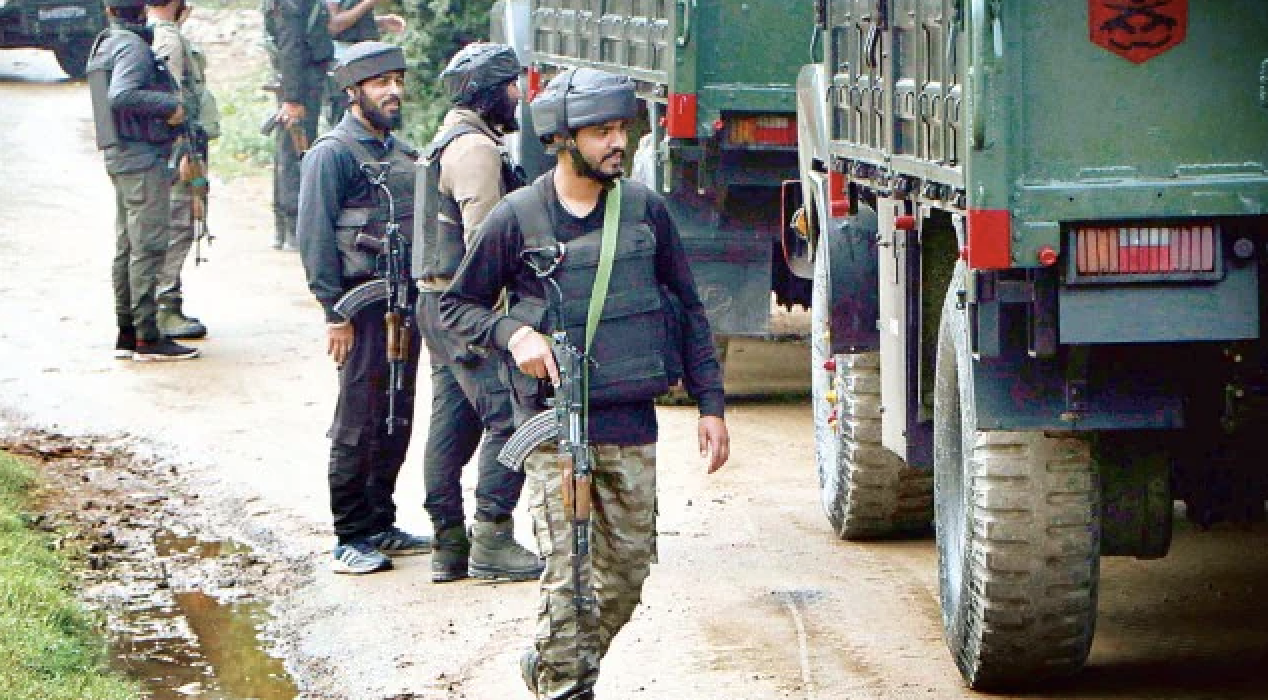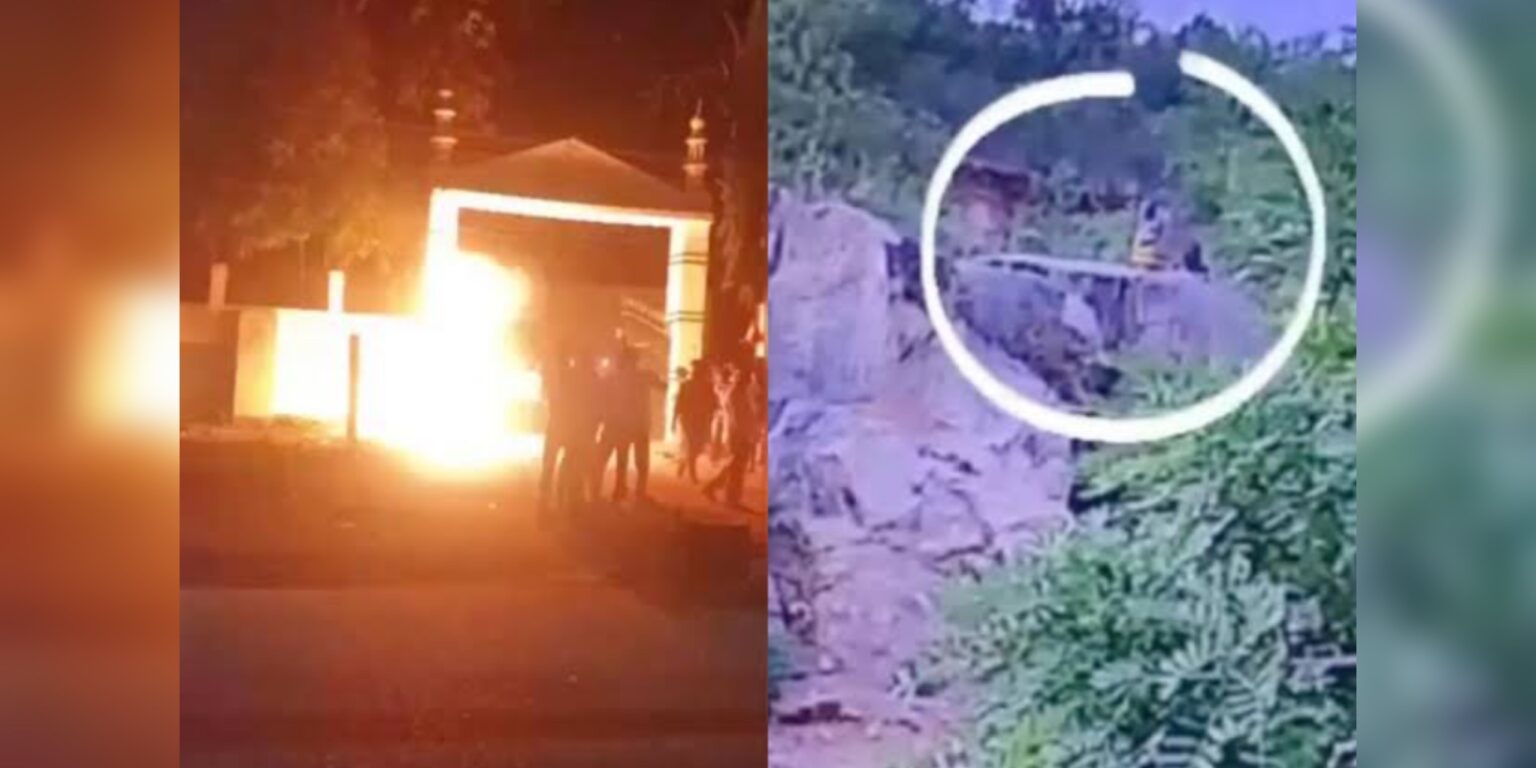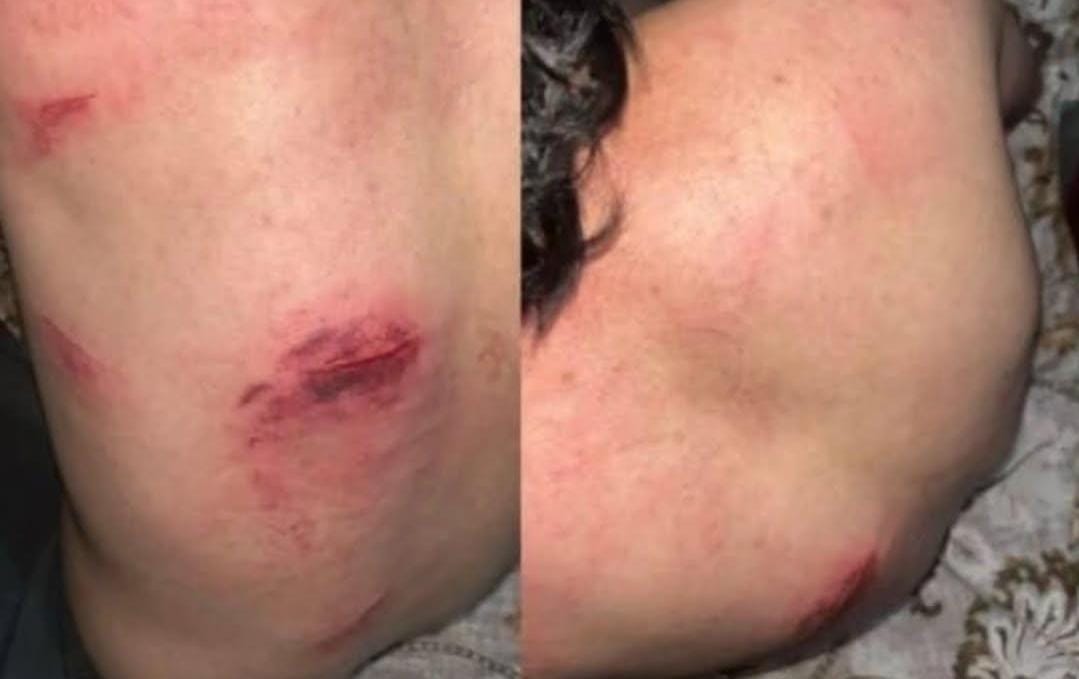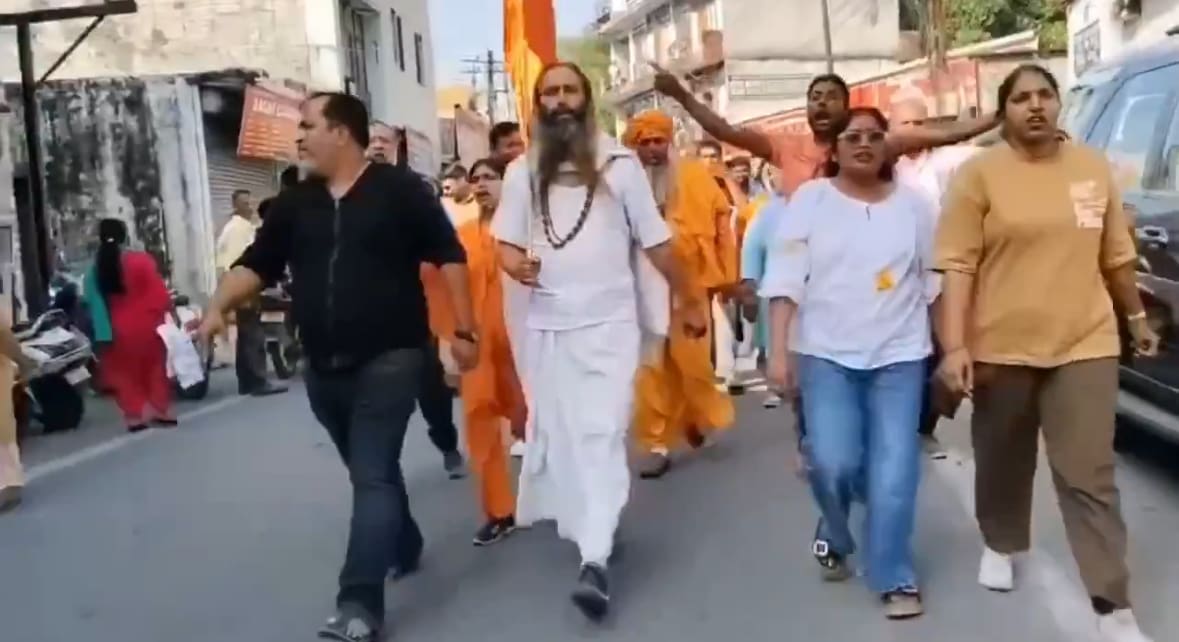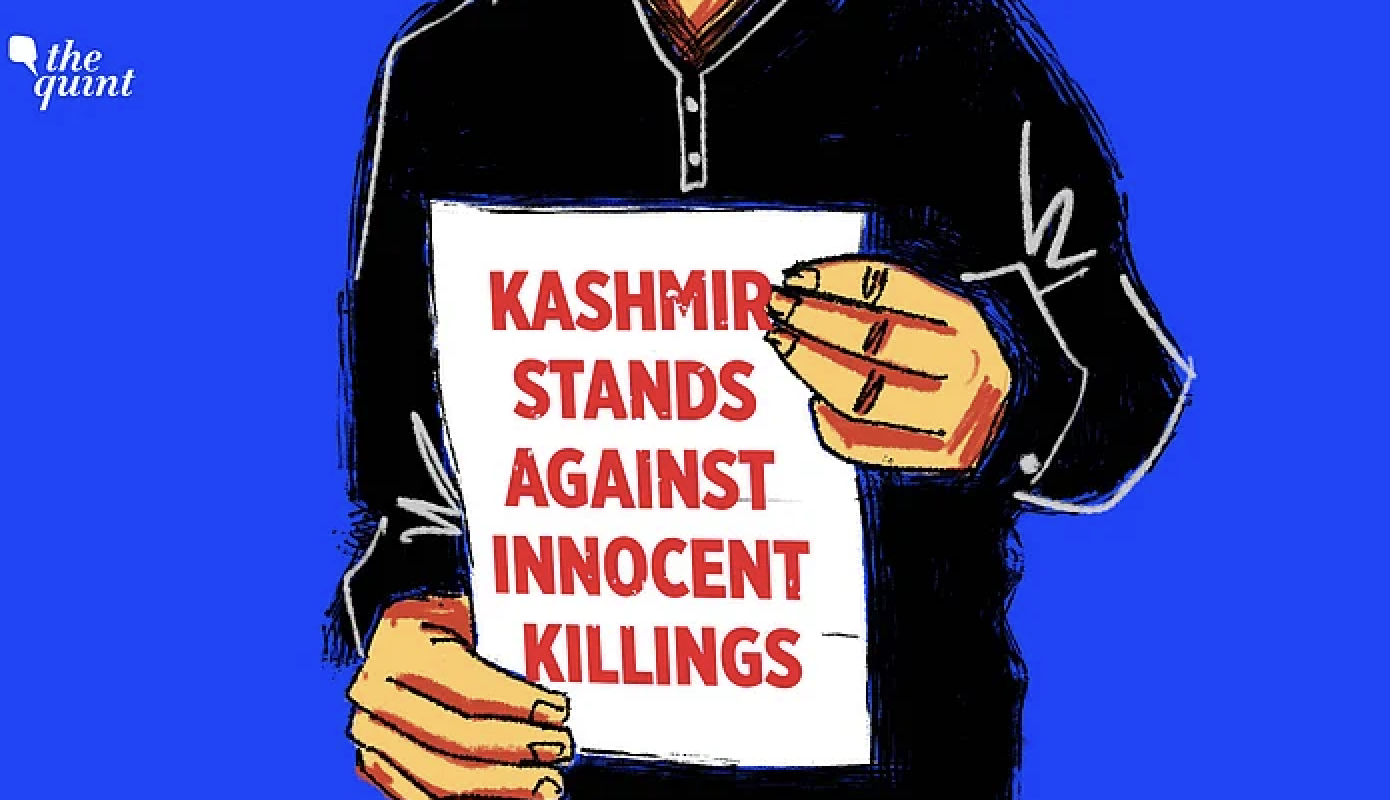
By Kashif Kakvi / The Wire
Bhopal: Madhya Pradesh has witnessed a number of cases of communal violence in the last few months.
According to Madhya Pradesh police, the state has recorded 479 cases of riots, registered under section 147 of the Indian Penal Code [whoever is guilty of rioting, shall be punished with imprisonment, or with fine] in the last six months. Of them, over 30% of the cases are related to communal violence.
The state witnessed a similar wave of communal riots between December 2020 and April 2021 in the Malwa region. At least 12 incidents of communal tension were reported from the region since September 2020 where section 153A [promoting enmity between different groups on grounds of religion, race, place of birth, residence] was invoked.
The clashes erupted during a donation rally for a Ram temple in Ayodhya in December 25, 2020, which was passing through a Muslim-dominated area in Ujjain. The rally was held by the Bharatiya Janata Yuva Morcha. Three days later, at Dhar – which neighbours the districts of Ujjain and Indore, similar clashes took place.
Two days after the clashes, over 12 Muslims were held and a Muslim man’s house was razed by the administration because it was rented by three of the accused and did not have “building permission.”
State home minister Narottam Mishra had said, “Those who throw stones from their houses and cause damage to public and private property will now come under the ambit of law [MP Damage to Public and Private Property Recovery Bill, 2021]. They will not be spared.”
A closer look at the clashes reveals a pattern: participants in Hindu religious processions allegedly brandished weapons and chanted anti-Muslim or provocative slogans as they passed through largely Muslim neighbourhoods or by mosques. The Muslims allegedly pelted stones in response, leading to communal clashes.
However, the action taken by the district administration came under criticism for selectively targeting the Muslim community. Therefore, it is important to understand the significance of the region – which is considered the road to electoral power in Madhya Pradesh.
The numbers game
Traditionally, the Malwa-Nimar region – which includes Ujjain, Indore, Ratlam, Barwani and Khargone – has been under the influence of the Rashtriya Swayamsevak Sangh (RSS). Since 1990, the region has been a fortress of the saffron party since 1990 – when it first came to power in Madhya Pradesh.
In the 2013 assembly elections, the Bharatiya Janata Party (BJP) won 56 out of 66 seats in the region and wrested all the eight Lok Sabha seats from this region in May 2014. But in the 2018 assembly elections, the saffron party lost a considerable number of seats in the Khargone and Barwani districts.
For the first time in almost three decades, the Congress won 35 seats out of the total 66 while the BJP’s tally fell to 28, in the 2018 assembly polls. The remaining three seats were won by independent candidates.
The Malwa-Nimar region falls in the western and southwestern parts of Madhya Pradesh, bordering Rajasthan, Maharashtra and Gujarat. It comprises 15 districts with 66 assembly and eight parliamentary seats. It has a sizable Muslim population. Both the regions recorded the highest number of confrontations between the Hindu and Muslim communities last year.
For instance, in Khargone and Barwani districts, which have been on the boil after the first COVID-19 lockdown, have 10 assembly seats – including seven that are reserved. In 2003, 2008 and 2013, the BJP won six or seven of these seats. But in 2018, the saffron party was able to win just one seat while the Congress cornered eight of them.
In Khargone, the Congress won five out of six seats and the remaining one was bagged by a Congress rebel. In Barwani, out of four seats, the BJP managed to win only one.
“Losing nine out of 10 seats in the 2018 assembly elections cost the BJP dearly, ending its 15-year reign in Madhya Pradesh,” said Madhuri Krishnaswamy, a tribal rights activist working in the Nimar region for over two decades. “When the BJP returned to power in March 2020 after toppling the 15-month-long Kamal Nath government with Jyotiraditya Scindia’s exit, the cases of confrontations between the two communities surged in the region without any provocation,” she said.
“These tribal districts have never seen such a wave of violence in decades despite the BJP rule,” she added.
Rising number of communal incidents
On May 2, police arrested the kin of a BJP leader who was trying to fuel communal violence on the eve of Eid-Ul-Fitr in Nimar’s Burhanpur district. He was booked under section 295(A) [deliberate and malicious acts, intended to outrage religious feelings of any class by insulting its religion or religious beliefs] of the IPC.
The incident took place when Khargone – which is over 140 kilometres away from Burhanpur – was under curfew after communal violence broke out on Ram Navami on April 10, leaving one dead and 50 injured.
Almost 60 km away from Khargone, Sendhwa city of Barwani district witnessed similar violence. Close to 49 properties were demolished in Khargone and 14 in Sendhwa, targeting Muslims, a day after the Ram Navami communal violence.
On May 16, in Malwa’s Neemuch district, a group of right-wing men attempted to install a statue of a Hindu deity near a century-old shrine, and then allegedly set a motorcycle and a cooler at the dargah on fire. The dargah was 700 metres from a mosque. A curfew was imposed after reports of stone pelting emerged.
On October 3 last year, a shrine located on the outskirts of Neemuch was vandalised with explosives but the police investigation led nowhere.
Other districts – including Dhar and Ratnam – also witnessed communal clashes in the last couple of months during the religious processions of both Hindu and Muslim communities. A Dhar Muslim community head alleged that the participants of Ram Mandir Nirman Nidhi Sangrah Abhiyan held a procession in which they brandished sharp weapons and shouted slogans against Muslims. Ratlam has also witnessed numerous confrontations over the azaan (Islamic prayer call) and for playing provocative songs outside mosques.
“The Shivraj Singh Chouhan-led BJP government is fuelling riots to polarise voters to regain its hold over the region ahead of civic polls this year and assembly elections next year,” said Congress leader Ravi Joshi, the Khargone MLA.
“They returned to their tried and tested mechanism – riots – to win elections after the BJP government failed on almost all fronts despite being in power for two decades,” he said.
Addressing the workers two weeks after the communal violence, Joshi challenged Chouhan to contest from Khargone. “Shivraj [Singh Chouhan] mistook that he can defeat the Congress by fuelling riots, but he can’t. The voters are smart and understand that the BJP has devised the recent clashes for its electoral gain,” he said.
The Jhabua and Alirajpur districts of the Malwa region have a sizable population of tribes, some of whom have converted to Christianity. These two districts have also witnessed a series of attacks on Christians – under the garb of stopping conversion in the last few months. Nonetheless, it stopped when the state government drew huge flak after a missionary school was attacked allegedly by the Bajrang Dal and Vishwa Hindu Parishad in Vidisha district on December 6, 2021.
The Jhabua and Alirajpur districts have five assembly seats, all of which are reserved. The Congress dominates four out of the five seats which have over 80% tribal voters. The party swept all five seats in the 2018 assembly elections but lost one in the 2020 bypolls after a sitting Congress MLA passed away.
Meanwhile, the saffron party has been running tribal outreach programmes as well as a ‘delisting campaign’, which seeks to deny reservations to persons who have converted. Under this drive, BJP MP from Jhabua, Guman Singh Damor, has been demanding that members of Scheduled Tribes who convert to any other religion must not be given reservations.
Altaf Azad, an activist from Khargone, pointed out that even 50 days after the clash, the Khargone police failed to find a single accused from the majority community while 200 Muslims are languishing behind the bars and close to 300 were booked – including 12 children.
Speaking to The Wire, Jaswinder Singh, state secretary of the Communist Party of India (Marxist), who headed the fact-finding team in Khargone, observed, “As the lockdown lifted and people began to question the failures of the government through small movements or protests, the government conspired communal riots to keep people busy and win its lost seats again.”
“Madhya Pradesh does not have a history of communal violence, unlike its neighbouring states. But now confrontations are taking place with a ‘greater frequency’. One clash is triggering clashes in another place. The frequency of the skirmishes points to the loss of trust between Hindus and Muslims, which is the gift of eight years of the Narendra Modi government,” added Singh.
This article first appeared on thewire.in


